[Music] HARUOMI HOSONO & YMO
- DENHOLM HEWLETT
- Nov 23, 2023
- 11 min read
The chameleon-like pioneer of Japanese electronic and world music. One of Japan's most iconic, eccentric and influential musical minds. The indefinable creative wizard who transformed the landscape of pop music as the head architect behind 'Yellow Magic Orchestra'.

Mr. "Harry" Hosono is one of Japan's most beloved and respected polymath musicians of the 21st century. A prolific experimentalist, bassist, singer, multi-instrumentalist with an impressive career spanning five decades, with over 30 unique solo albums and hundreds of recordings as a band leader, record producer, songwriter, arranger and session player. Hosono is considered to be the godfather of Japanese electronica, a creative maverick with an avid curiosity for exploring new sonic territory.

Hosono embodies a strong free-wheeling creative ethos that dismantles the plasticity of genre and bends it to his artistic will. He's the chameleon-like auteur of his own idiosyncratic sonic universe, playing host to an encyclopaedic plethora of cultural and musical influences, his immense catalog of exuberant cross-pollination is impossible to pigeon hole.

Haruomi Hosono was in born in Minato-ku, Tokyo, on July 9th, 1947, he is the grandson of Masabumi Hosono, the only Japanese survivor of the Titanic. Hosono began dedicating himself to music from an early age. As a child, he grew up with an obsession for American music and pop culture, surrounded by piles of 78rpm "boogie-woogie" records which captured his imagination and would influence his ventures into rock, folk and country music. Hosono bought his first guitar at age 12, formed his first band at 14, and was also heavily influenced by Manga, Cinema and Rakugo.

Hosono started his musical career in '69 as the bassist for the short-lived psychedelic rock outfit Apryl Fool, before swiftly establishing his first real rock group, the psyche folk outfit Happy End in '70. They were the first Japanese rock group to sing entirely in their language, a massive turning point in Japanese pop music history. The group's unorthodox fusion of west coast folk sounds and playful Japanese lyricism resulted in three acclaimed albums which established the legitimacy of the Japanese rock genre.

In 1973, the same year that Happy End disbanded, Hosono assembled a crew of talented studio musicians, Tin Pan Alley, to live and record music together in a tiny Tokyo apartment, stacked to the ceiling with instruments and recording equipment. This ensemble would play alongside Hosono on all his future solo projects and perform as his live band. During this time, Hosono was becoming increasingly infatuated with the sonic nostalgia of mid-century Americana and the intoxicating exotica sounds of island "paradise", exemplified by American lounge musician Martin Denny.

Haruomi Hosono chose to blend the tropical island aesthetic of Hawaii and Okinawa with influences from South American and Chinese music to produce a series of eclectic and exotic jazz fusion records. He kickstarted his solo career with Hosono House (1973), an enigmatic blend of electronic Japanese exotica, acoustic bossa-nova folk, and Americana country music.
Hosono House was just the start of Hosono's exotica jazz era. The maverick swiftly followed this with three of his most colourful and enigmatic Bossa-nova jazz-fusion themed albums, known as the "Tropical trilogy"; which include the oceanic marimba daydreams of Tropical Dandy in '75, the New-Orleans/Okinawa big-band swing of Bon Voyage co. in '76, and the mystical electronica-funk odysseys of Pacific and Paraiso in '78.
Paraiso, the last album of the trilogy, was a remarkable turning point in Hosono's career, foreshadowing the innovative electronic sounds he would fully realise with Yellow Magic Orchestra. The album itself is a captivating and experimental spiritual fusion of traditional melodies and otherworldly synthesised textures that encapsulated Hosono's eccentric worldview.

Hosono's Tropical Trilogy is credited with helping to pioneer the "sight-seeing" concept, a mode of creation and listening, whereby both the artist and the listener should view themselves as nomadic island hopping musical tourists, absorbing all the exotic sights and sounds of foreign cultures with a fresh perspective and open frame of mind, to help expand your horizons.

The Paraiso album features Hosono's first collaborations with Ryuichi Sakamoto and Yukihiro Takahashi, his future Yellow Magic Orchestra band members. The trio's early forays into exotic electronica experimentation as the "Yellow Magic Band" can be heard on the tropical birds-of-paradise grooves and synth-laden instrumental textures of "Femme Fatale" and "Paraiso".
After Paraiso, Hosono travelled around India for a month with some friends recording a drastically different project, Cochin Moon, a highly avant garde bubbling synth-based soundtrack created to accompany an imaginary Bollywood film. This project was initially a collaboration between Hosono and his close friend Tadanori Yokoo, who designed the artworks for Paraiso & Cochin Moon. This concept album is Hosono's earliest recordings where he worked exclusively with a synthesiser, this instrument would go on to heavily influence all his future musical work as a solo artist and as a bandleader.
"I get bored real easy. It's always the same. If I'm making techno, I'll want to listen to country. Like if you're eating something sweet, you'll want to eat something savoury, That's how you get fat!" - Hosono

In 1978, Hosono founded the most successful project of his career. He enlisted the skills of Sakamoto and Takahashi to establish their futuristic electronic band Yellow Magic Orchestra. This innovative group chose to embrace modern musical computer technologies during the zeitgeist of the Techno-pop and acid-house movements, alongside the likes of Kraftwerk, to produce avant-garde computerised dance tunes that were unmistakably Japanese in nature. Hosono was known as "the ideas man" in YMO.

Hosono originally intended YMO to be a one-off stand-alone project, to transform traditional Japanese compositions into something entirely modern and electronic, while exploring the sounds of computerised exotica that would parody the western interpretations of "oriental music", encapsulated by the group's lovingly sarcastic cover of Martin Denny's "Firecracker", which became an international hit and launched the band's career.
YMO 's music would ultimately revolutionise the future dynamics of pop culture and hip-hop music with their pioneering use of Moog synthesisers, 808 drum machines, samplers, rhythm machines, computers, sequencers, and digital recording technology. The band approached electronic music with a colourful, liberating and uplifting attitude, they didn't want to create the same formalised and bleak dystopian style of "robot pop" dance music that was already being made in Dusseldorf and Detroit. These three futuristic pioneers wanted to create something "very original from Japan" and aimed to subvert the westernised concept of the orient with new technology.
The technological musical innovations, cultural impact and international success of Yellow Magic Orchestra's music redefined a whole era of popular culture which later became referred to in Japan as the "YMO generation". The group released seven albums from 1978 until 1983, including the pivotal "Solid State Survivor" in 1979. YMO were a cultural phenomenon in Japan and gained a huge cult following overseas. The group had multiple platinum records, toured across the globe, and even featured on Soul Train.

Whilst developing his career with Yellow Magic Orchestra with Sakamoto and Takahashi, Hosono still continued recording his own experimental solo albums all throughout the 80's, 90's and 2000's, allowing him to explore the sounds of spiritual ambient electronica, 8-bit nintendo chip-tune techno and eclectic world fusions. The sheer impact and influence of YMO, along with Kraftwerk, transformed the landscape of electronic music and Hip Hop forever. YMO's song 'Behind The Mask' was covered by Michael Jackson and Eric Clapton, while Hosono's solo music has been sampled by J Dilla and covered by Mac Demarco. Haruomi even produced a crunchy electronic remix of James Browns' "Sex Machine" back in 1986 with Friends of Earth.

Hosono's entire discography & musical journey is far too immense and intricate to summarise in this one article alone, even the maestro himself cannot recall how many albums he's made. The influence and innovation of Hosono's contribution to music cements his legacy in history as one of the key architects of modern pop music. The thing that truly defines Hosono is his wonderful wit and sense of humour applied to everything he does as an artist, even though he's talented, he's never full of himself. He's an eclectic shapeshifting mastermind of global musical styles with an incredible goldmine of music under his belt, and he's still going strong today!
~ Scroll through a gallery of Hosono's album artworks, including Apryl Fool, Happy End, YMO and nearly all his solo works. ~
The popularity of Hosono's music has witnessed a resurgence in recent years, leading Light in the Attic records to re-release a remastered collection of Hosono's major exotica-era albums for their first online and physical worldwide release. Last year, Haruomi released a new electronica reimagining of his debut LP Hosono House, Hochono House.
~ PSYCHIC GARDENThe chameleon-like pioneer of Japanese electronic music and one of the country's most iconic and influential living musicians. Hosono is an indefinable creative wizard who transformed the landscape of modern pop music as the head architect of Happy End and Yellow Magic Orchestra.

Mr. "Harry" Hosono is one of Japan's most beloved and respected polymath musicians of the 21st century. A prolific experimentalist, bassist, singer, multi-instrumentalist with an impressive career spanning five decades, with over 30 unique solo albums and hundreds of recordings as a band leader, record producer, songwriter, arranger and session player. Hosono is considered to be the godfather of Japanese electronica, a creative maverick with an avid curiosity for exploring new sonic territory.

Hosono embodies a strong free-wheeling creative ethos that dismantles the plasticity of genre and bends it to his artistic will. He's the chameleon-like auteur of his own idiosyncratic sonic universe, playing host to an encyclopaedic plethora of cultural and musical influences, his immense catalog of exuberant cross-pollination is impossible to pigeon hole.

Haruomi Hosono was in born in Minato-ku, Tokyo, on July 9th, 1947, he is the grandson of Masabumi Hosono, the only Japanese survivor of the Titanic. Hosono began dedicating himself to music from an early age. As a child, he grew up with an obsession for American music and pop culture, surrounded by piles of 78rpm "boogie-woogie" records which captured his imagination and would influence his ventures into rock, folk and country music. Hosono bought his first guitar at age 12, formed his first band at 14, and was also heavily influenced by Manga, Cinema and Rakugo.

Hosono started his musical career in '69 as the bassist for the short-lived psychedelic rock outfit Apryl Fool, before swiftly establishing his first real rock group, the psyche folk outfit Happy End in '70. They were the first Japanese rock group to sing entirely in their language, a massive turning point in Japanese pop music history. The group's unorthodox fusion of west coast folk sounds and playful Japanese lyricism resulted in three acclaimed albums which established the legitimacy of the Japanese rock genre.

In 1973, the same year that Happy End disbanded, Hosono assembled a crew of talented studio musicians, Tin Pan Alley, to live and record music together in a tiny Tokyo apartment, stacked to the ceiling with instruments and recording equipment. This ensemble would play alongside Hosono on all his future solo projects and perform as his live band. During this time, Hosono was becoming increasingly infatuated with the sonic nostalgia of mid-century Americana and the intoxicating exotica sounds of island "paradise", exemplified by American lounge musician Martin Denny.

Haruomi Hosono chose to blend the tropical island aesthetic of Hawaii and Okinawa with influences from South American and Chinese music to produce a series of eclectic and exotic jazz fusion records. He kickstarted his solo career with Hosono House (1973), an enigmatic blend of electronic Japanese exotica, acoustic bossa-nova folk, and Americana country music.
Hosono House was just the start of Hosono's exotica jazz era. The maverick swiftly followed this with three of his most colourful and enigmatic Bossa-nova jazz-fusion themed albums, known as the "Tropical trilogy"; which include the oceanic marimba daydreams of Tropical Dandy in '75, the New-Orleans/Okinawa big-band swing of Bon Voyage co. in '76, and the mystical electronica-funk odysseys of Pacific and Paraiso in '78.
Paraiso, the last album of the trilogy, was a remarkable turning point in Hosono's career, foreshadowing the innovative electronic sounds he would fully realise with Yellow Magic Orchestra. The album itself is a captivating and experimental spiritual fusion of traditional melodies and otherworldly synthesised textures that encapsulated Hosono's eccentric worldview.

Hosono's Tropical Trilogy is credited with helping to pioneer the "sight-seeing" concept, a mode of creation and listening, whereby both the artist and the listener should view themselves as nomadic island hopping musical tourists, absorbing all the exotic sights and sounds of foreign cultures with a fresh perspective and open frame of mind, to help expand your horizons.

The Paraiso album features Hosono's first collaborations with Ryuichi Sakamoto and Yukihiro Takahashi, his future Yellow Magic Orchestra band members. The trio's early forays into exotic electronica experimentation as the "Yellow Magic Band" can be heard on the tropical birds-of-paradise grooves and synth-laden instrumental textures of "Femme Fatale" and "Paraiso".
After Paraiso, Hosono travelled around India for a month with some friends recording a drastically different project, Cochin Moon, a highly avant garde bubbling synth-based soundtrack created to accompany an imaginary Bollywood film. This project was initially a collaboration between Hosono and his close friend Tadanori Yokoo, who designed the artworks for Paraiso & Cochin Moon. This concept album is Hosono's earliest recordings where he worked exclusively with a synthesiser, this instrument would go on to heavily influence all his future musical work as a solo artist and as a bandleader.
"I get bored real easy. It's always the same. If I'm making techno, I'll want to listen to country. Like if you're eating something sweet, you'll want to eat something savoury, That's how you get fat!" - Hosono

In 1978, Hosono founded the most successful project of his career. He enlisted the skills of Sakamoto and Takahashi to establish their futuristic electronic band Yellow Magic Orchestra. This innovative group chose to embrace modern musical computer technologies during the zeitgeist of the Techno-pop and acid-house movements, alongside the likes of Kraftwerk, to produce avant-garde computerised dance tunes that were unmistakably Japanese in nature. Hosono was known as "the ideas man" in YMO.

Hosono originally intended YMO to be a one-off stand-alone project, to transform traditional Japanese compositions into something entirely modern and electronic, while exploring the sounds of computerised exotica that would parody the western interpretations of "oriental music", encapsulated by the group's lovingly sarcastic cover of Martin Denny's "Firecracker", which became an international hit and launched the band's career.
YMO 's music would ultimately revolutionise the future dynamics of pop culture and hip-hop music with their pioneering use of Moog synthesisers, 808 drum machines, samplers, rhythm machines, computers, sequencers, and digital recording technology. The band approached electronic music with a colourful, liberating and uplifting attitude, they didn't want to create the same formalised and bleak dystopian style of "robot pop" dance music that was already being made in Dusseldorf and Detroit. These three futuristic pioneers wanted to create something "very original from Japan" and aimed to subvert the westernised concept of the orient with new technology.
The technological musical innovations, cultural impact and international success of Yellow Magic Orchestra's music redefined a whole era of popular culture which later became referred to in Japan as the "YMO generation". The group released seven albums from 1978 until 1983, including the pivotal "Solid State Survivor" in 1979. YMO were a cultural phenomenon in Japan and gained a huge cult following overseas. The group had multiple platinum records, toured across the globe, and even featured on Soul Train.

Whilst developing his career with Yellow Magic Orchestra with Sakamoto and Takahashi, Hosono still continued recording his own experimental solo albums all throughout the 80's, 90's and 2000's, allowing him to explore the sounds of spiritual ambient electronica, 8-bit nintendo chip-tune techno and eclectic world fusions. The sheer impact and influence of YMO, along with Kraftwerk, transformed the landscape of electronic music and Hip Hop forever. YMO's song 'Behind The Mask' was covered by Michael Jackson and Eric Clapton, while Hosono's solo music has been sampled by J Dilla and covered by Mac Demarco. Haruomi even produced a crunchy electronic remix of James Browns' "Sex Machine" back in 1986 with Friends of Earth.

Hosono's entire discography & musical journey is far too immense and intricate to summarise in this one article alone, even the maestro himself cannot recall how many albums he's made. The influence and innovation of Hosono's contribution to music cements his legacy in history as one of the key architects of modern pop music. The thing that truly defines Hosono is his wonderful wit and sense of humour applied to everything he does as an artist, even though he's talented, he's never full of himself. He's an eclectic shapeshifting mastermind of global musical styles with an incredible goldmine of music under his belt, and he's still going strong today!
~ Scroll through a gallery of Hosono's album artworks, including Apryl Fool, Happy End, YMO and nearly all his solo works. ~
The popularity of Hosono's music has witnessed a resurgence in recent years, leading Light in the Attic records to re-release a remastered collection of Hosono's major exotica-era albums for their first online and physical worldwide release. Last year, Haruomi released a new electronica reimagining of his debut LP Hosono House, Hochono House.
~ PSYCHIC GARDEN








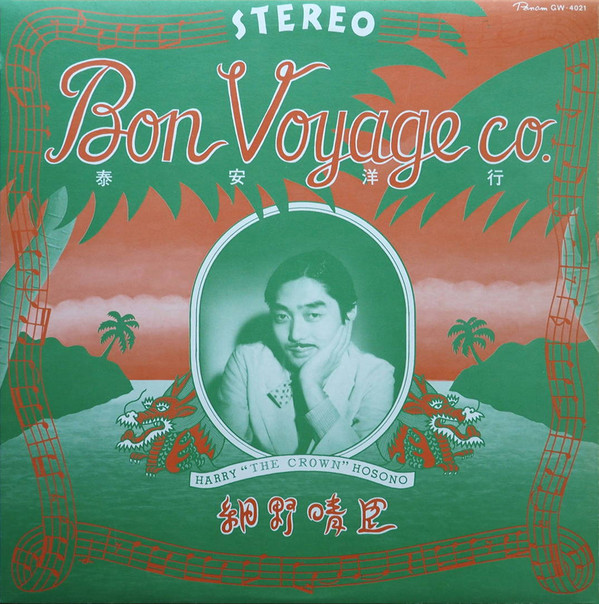



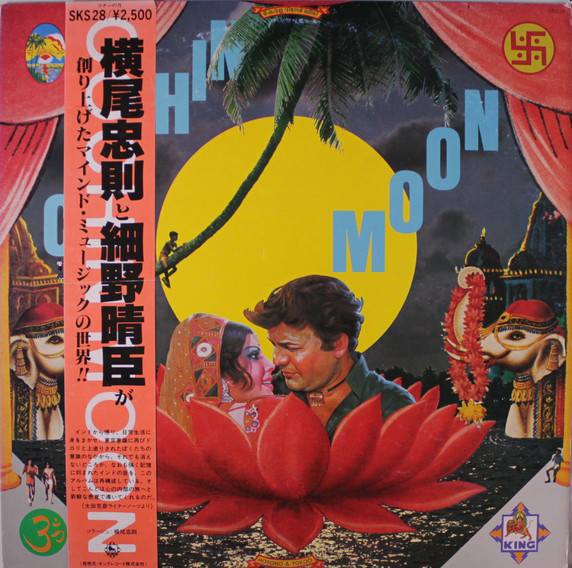

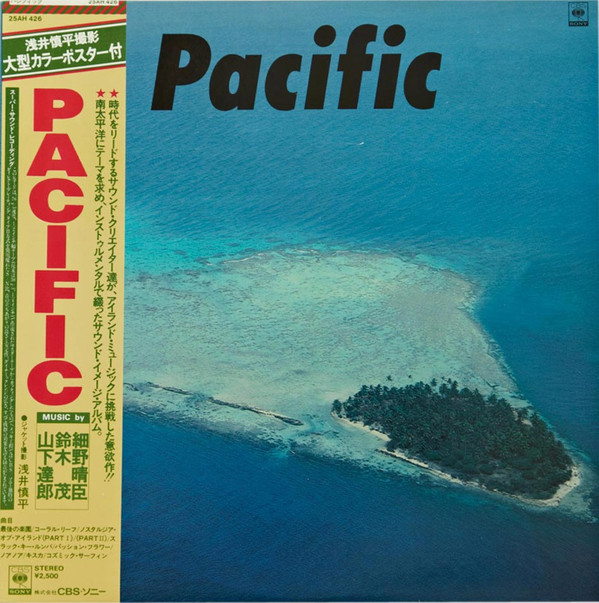









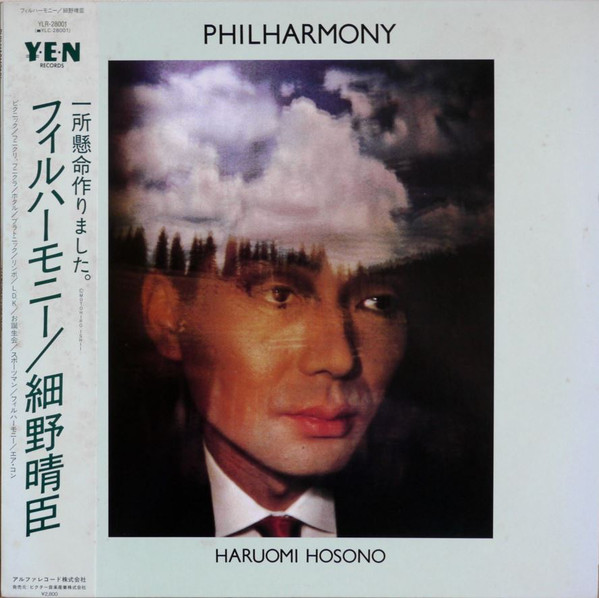



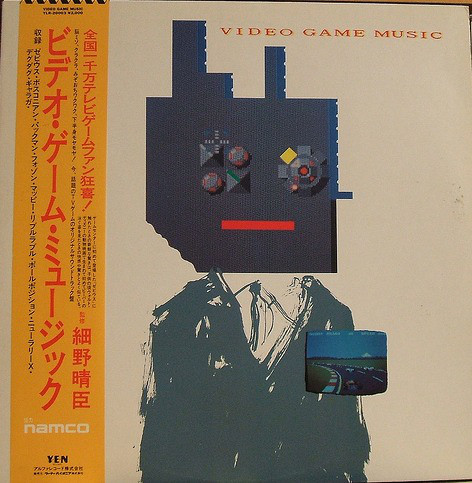

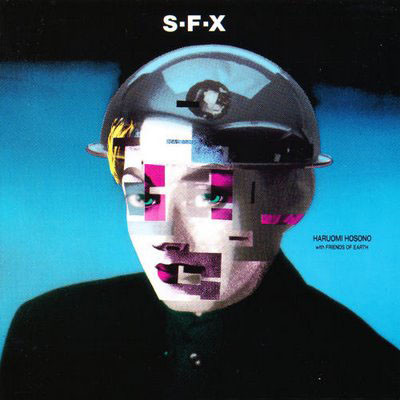







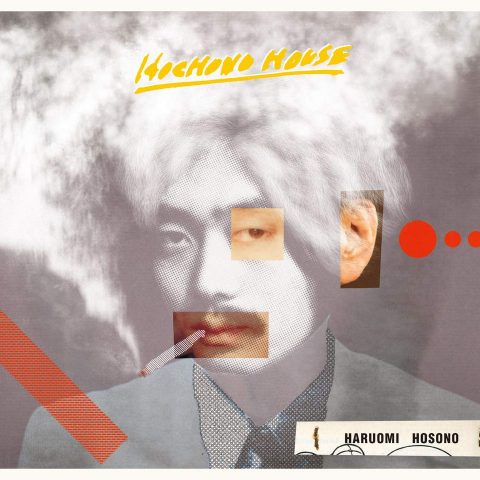

![[Music] BETHANY LEY](https://static.wixstatic.com/media/2a7adf_09068d051dd34f36b99c6bf7e5be7261~mv2.jpg/v1/fill/w_980,h_980,al_c,q_85,usm_0.66_1.00_0.01,enc_avif,quality_auto/2a7adf_09068d051dd34f36b99c6bf7e5be7261~mv2.jpg)
![[Photography] SULPHUR MINERS OF KAWAH IJEN VOLCANO](https://static.wixstatic.com/media/78e459_d9434605484c4d9da495c603bf255a3b~mv2.jpg/v1/fill/w_980,h_655,al_c,q_85,usm_0.66_1.00_0.01,enc_avif,quality_auto/78e459_d9434605484c4d9da495c603bf255a3b~mv2.jpg)